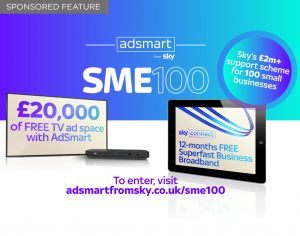J.C. Penney’s claim that “a happy customer is your walking advertisement,” remains hugely relevant; however today an unhappy customer can destroy a business’s reputation in a single tweet.
In order to survive in today’s ‘always on’ world, businesses must maintain an online presence to interact with customers looking for instant responses.
What’s more, the power and importance of using social media to create positive brand advocacy is astounding. Once this is established, your advocates will do your marketing for you to help set the the business apart from the competition. Businesses must then approach marketing with confidence, creativity and dedication in order to make their business stand out from the crowd.
Your customers are not the only advocates with the power to market your business. Your staff, your suppliers and any other stakeholders involved can also contribute, but you must engage them correctly and give them the tools they need to speak passionately about your business.
In order to instil consistent and positive brand advocacy across your business, you must define brand values and educate those around you on your mission, your point of difference and your business story. This way, you take your stakeholders on a business journey, and they gain an informed understanding of what makes you different. A brand story also gives them a narrative and a currency with which to speak genuinely about you, and staff should always be given a voice, empowering them with the ability to shape and contribute to your business model. What you create here is passion, dedication and motivation; ultimately, the more engaged your stakeholders are, the more likely they are to become positive business advocates.
Businesses must also have a thorough understanding of their consumer, what motivates them and how they can connect emotionally to your business offering. This way, you can easily establish how your brand can suit the genuine needs of the consumer and market it accordingly. Start with the consumer journey, and monitor it along each and every touch-point, making sure that your business values and language are consistent over each and every consumer-to-brand interaction. If customer service plays a role, ensure it is the very best, make it memorable and, if appropriate, personal.
Advocacy aside, there are very practical steps you can take too. If you’re marketing a specific product, try to do this creatively, adding in an element of surprise that will help create memorability or position your product in a new light. Unexpected stunts or guerrilla marketing are effective (although be aware of potential retaliations), as is surprising product placement. The agency BBDO, for instance, had retailers stock Campbell’s Chicken Noodle Soup among the cold and flu remedies – a simple but extremely effective strategy.
Likewise, one of the most effective and costfree marketing tools is social media. Be sure to leverage your engagement and involvement in social media, and don’t underestimate the value of contributing to blogs (your own and commenting on others’) as well as Twitter, Google+, Flickr, YouTube and Pinterest if visual imagery is important. In order that your business appears first in searches, optimise your website for SEO and ensure your location for shops, offices and outlets are all identified by Google Places.
Word of mouth is also hugely powerful. If a customer likes you, they will tell one person; if they don’t like you, they will tell ten, so it can work positively or negatively for your business depending on how much advocacy is heroed and made a key focus of your marketing strategy. Utilising existing client or customer testimonials can lend weight to your marketing, so don’t be shy of asking for introductions. Word of mouth and personal recommendations from existing customers to friends and colleagues can be incredibly effective and is usually free.
Taking a risk and challenging the status quo will allow your business to stand out, so in order to approach your market with a strategic and daring eye, brands should adopt a challenger brand mentality. Some of the most successful businesses today were built through following a vision, taking a risk and never giving up.
Passion and self-belief are both hugely pervasive and persuasive in getting people to support your business, and without these, marketing your business becomes a sure set-up for failure. Equally, proactivity is key. Explore and engage with local networking events and, if appropriate, look to speak at conferences and seminars. Enter free industry awards and read, respond and raise awareness of your business in good old-fashioned press. Also remember that traditional press should not be ignored.
Businesses must remember that marketing does not always have to cost money, but what it will require is creative thinking, energy and of course time. Get into the mind of your consumer, get networking and get building those connections to consumers, clients and the wider industry.
Share via:







































